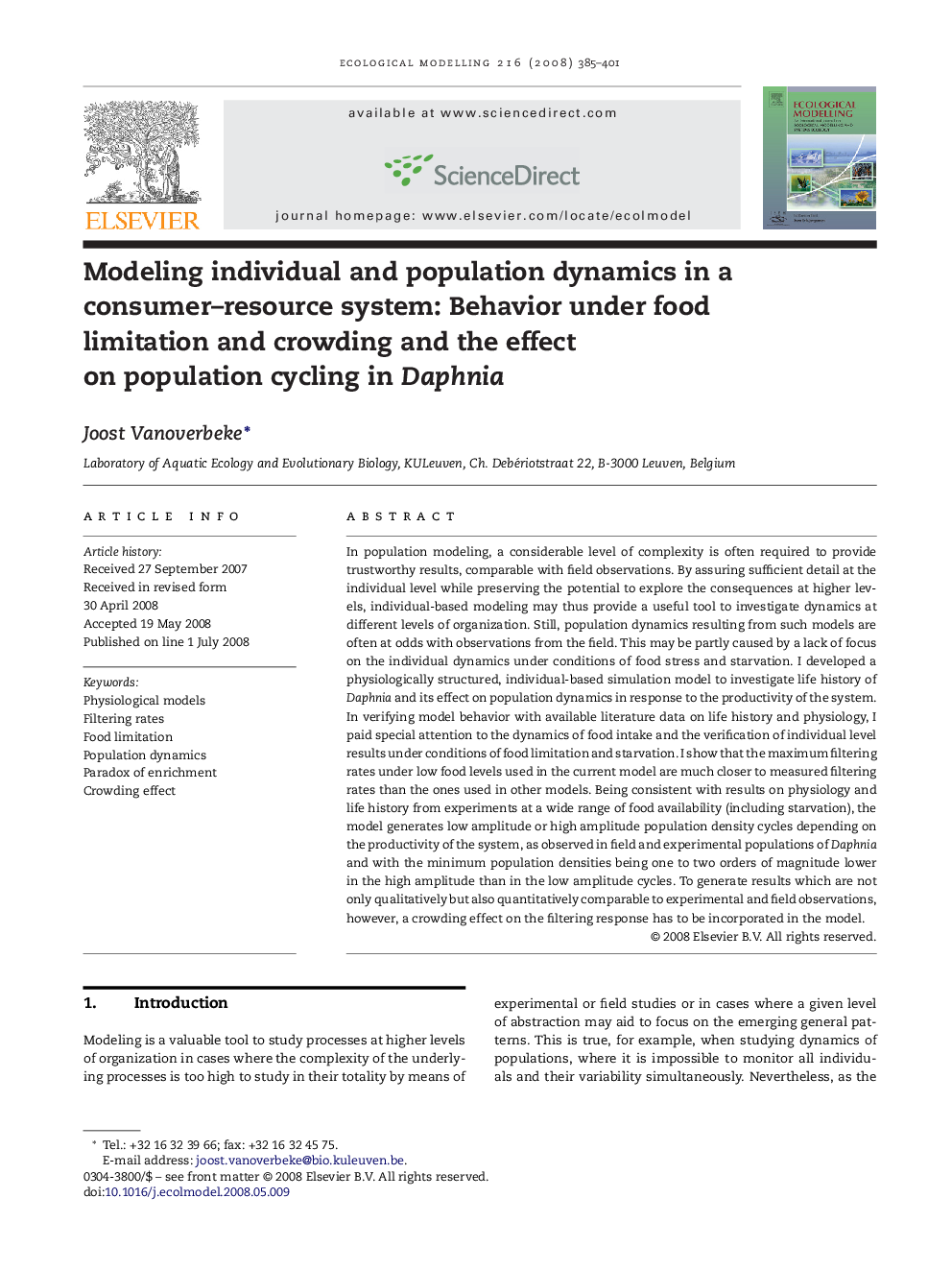| کد مقاله | کد نشریه | سال انتشار | مقاله انگلیسی | نسخه تمام متن |
|---|---|---|---|---|
| 4378015 | 1617531 | 2008 | 17 صفحه PDF | دانلود رایگان |
عنوان انگلیسی مقاله ISI
Modeling individual and population dynamics in a consumer-resource system: Behavior under food limitation and crowding and the effect on population cycling in Daphnia
دانلود مقاله + سفارش ترجمه
دانلود مقاله ISI انگلیسی
رایگان برای ایرانیان
کلمات کلیدی
موضوعات مرتبط
علوم زیستی و بیوفناوری
علوم کشاورزی و بیولوژیک
بوم شناسی، تکامل، رفتار و سامانه شناسی
پیش نمایش صفحه اول مقاله

چکیده انگلیسی
In population modeling, a considerable level of complexity is often required to provide trustworthy results, comparable with field observations. By assuring sufficient detail at the individual level while preserving the potential to explore the consequences at higher levels, individual-based modeling may thus provide a useful tool to investigate dynamics at different levels of organization. Still, population dynamics resulting from such models are often at odds with observations from the field. This may be partly caused by a lack of focus on the individual dynamics under conditions of food stress and starvation. I developed a physiologically structured, individual-based simulation model to investigate life history of Daphnia and its effect on population dynamics in response to the productivity of the system. In verifying model behavior with available literature data on life history and physiology, I paid special attention to the dynamics of food intake and the verification of individual level results under conditions of food limitation and starvation. I show that the maximum filtering rates under low food levels used in the current model are much closer to measured filtering rates than the ones used in other models. Being consistent with results on physiology and life history from experiments at a wide range of food availability (including starvation), the model generates low amplitude or high amplitude population density cycles depending on the productivity of the system, as observed in field and experimental populations of Daphnia and with the minimum population densities being one to two orders of magnitude lower in the high amplitude than in the low amplitude cycles. To generate results which are not only qualitatively but also quantitatively comparable to experimental and field observations, however, a crowding effect on the filtering response has to be incorporated in the model.
ناشر
Database: Elsevier - ScienceDirect (ساینس دایرکت)
Journal: Ecological Modelling - Volume 216, Issues 3â4, 10 September 2008, Pages 385-401
Journal: Ecological Modelling - Volume 216, Issues 3â4, 10 September 2008, Pages 385-401
نویسندگان
Joost Vanoverbeke,